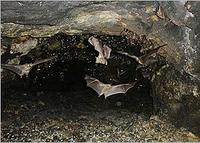-
Rearming penicillin for the twenty-first century
Penicillin, one of the scientific marvels of the twentieth century, is currently losing a lot of battles it once won against bacterial infections. Scientists, however, have just reported a new approach to restoring its combat effectiveness, even against so-called “superbugs.”
-
-
Identifying the most likely non-state chem-bio threats
New research finds that Jihadists pose the most likely chem-bio threat, but other actors also featured as top threats. Jihadist actors occupied seven of the top 10 spots in a qualitative analysis; nine of the top 10 in a quantitative analysis; and half of the top 10 in an elicitation analysis.
-
-
Promising agents defeat superbug defenses
In the fight against “superbugs,” scientists have discovered a class of agents, called metallopolymers, which can make some of the most notorious strains vulnerable to the same antibiotics that they once handily shrugged off.
-
-
2014 edition of updated first responder biodetection technology guide available
A 2014 update to a detailed product guide listing biodetection technologies and sampling products is now available. The updated digest, Biodetection Technologies for First Responders: 2014, provides a comprehensive compilation of commercially available detection devices and products published to help first responders when purchasing equipment and supplies needed to rapidly assess biological threats.
-
-
Britons worry that new EU food inspection rules would risk U.K. food safety
The European Food Safety Authority(EFSA) in June will introduce a new Europe-wide food inspection regime, arguing that there is a need to modernize the food inspection process. The EFSA plans to reduce seventy pieces of detailed regulation down to a framework of five overarching laws to “reduce the burden on business.”Among other things, the new rules will replace laws that list diseases banned from the meat supply with a more general requirement on safety, health, and welfare. The EFSA claims that many of the diseases and parasites inspectors currently find are harmless to humans and are not considered major animal diseases. U.K. consumer advocates, meat inspectors, and veterinarians say the new rules threaten the safety of the U.K. food supply.
-
-
Drug-resistant TB emerges as a global threat
Drug-resistant tuberculosis (DR-TB) has become a global threat,with multidrug resistant TB causing about 500,000 new cases every year. Experts say the problem requires cooperation among governments, pharmaceuticals, and academics to develop effective treatments.
-
-
Food-related disease outbreaks can teach us about the consequence of food terrorism
Since unintentional food-related outbreaks have become so common, policy makers could use data from unintended foodborne disease outbreaks to estimate the effects of intended foodborne disease outbreaks. The impact on trade and economies is the primary motive for food terrorism, according to the World Health Organization (WHO), but beyond the financial loss, such intended foodborne disease outbreaks may even impact political stability.
-
-
W.Va. residents still wary about their drinking water
The January 2014 chemical spill in West Virginia, which contaminated the drinking water of 300,000 residents, has changed how residents use public water. Authorities claimed the water was safe for consumption on 13 January, since MCHM levels had dropped below a federal safety threshold of one part per million. Residents remain skeptical, with some collecting rain water, and other relying on clean water distributed by non-profits.
-
-
Lead ammunition should be replaced by steel in shooting sports: experts
Researchers say that Olympic athletes specializing in shooting use one thousand cartridges per week and scatter some 1.3 tons of lead yearly, with harmful effects for surrounding animals and agricultural land. The researchers urge the International Olympic Committee and other sports organizations to replace lead ammunition with steel, which is non-toxic and contains similar technical characteristics.
-
-
Positive results reported from single dose anthrax vaccine studies

Immunovaccine and Pfenex announced positive results from anthrax challenge studies in rabbits using Pfenex’s mutant recombinant Protective Antigen (mrPA) formulated with Immunovaccine’s DepoVax delivery system. Data demonstrates 100 percent protection against a lethal anthrax challenge in animals after vaccination with as little as 0.33 microgram of mutant recombinant Protective Antigen. Dose response observed in the first twenty-eight days following vaccination.
-
-
Bacteriophage “cocktail” eradicates 99 percent of E. coli in meat, spinach
Treating food products with select bacteriophages — viruses which target and kill bacteria — could significantly reduce concentrations of E. coli, a new study shows. An injection of bacteriophages — also known informally as “phages” — nearly eradicated a toxin-producing strain of E. coli in contaminated spinach and ground beef, in some cases decreasing E. coli concentrations by about 99 percent. Interest in using phages as antibacterial treatments has increased with the rise of antibiotic-resistant bacteria.
-
-
New drone-based system improves safety of dealing with nuclear hazards
Hazardous nuclear events have the potential to cause widespread damage to individuals and the environment. Getting close enough to these incidents to accurately assess the problem can be extremely dangerous. Following the incident at the Fukushima power plant in Japan in 2011, for example, helicopter pilots assessing the site were exposed to significant amounts of radiation. Researchers have developed a new system for remote and accurate assessment of dangerous nuclear accident sites.
-
-
Scientists learn how Marburg virus grows in cells

Infections with Marburg virus lead to death in as many as 90 percent of those infected. Once restricted to Africa, cases of the virus have been identified in travelers from Europe and the United States, making effective prevention and treatment a top biodefense priority. Study suggests targeting molecular interaction of virus and host protein may arrest this lethal virus.
-
-
Infection control: why doctors over-prescribe antibiotics
The modern antibiotic era began with the discovery of penicillin in 1928, which led to dramatic improvements in our ability to treat common infections. This was probably the most important discovery in the history of modern medicine. And for a long time, antibiotics reigned supreme in the battle against previously deadly bacterium. The dramatic improvements of the twentieth century, however, are now being undone by overuse and misuse of antibiotics. Resistant superbugs and poor use of antibiotics are together leading us toward an “antimicrobial perfect storm” in the next few decades. This may sound apocalyptic but it’s simple epidemiology: increasing resistance combined with decreasing antibiotic options will worsen to the point where we will have no capacity to treat previously highly treatable infections.
-
-
West Virginia chemical spill degrades air, water quality
In the more than two months since the 9 January chemical spill into West Virginia’s Elk River, new findings reveal the nature of the chemicals that were released into the water and then into the air in residents’ houses. The lack of data motivated researchers to take on essential odor-related research that went beyond their National Science Foundation Rapid Response Research grant to better understand the properties of the chemical mixture called crude 4-methylcyclohexane methanol, the major component in the crude mix of the spilled chemicals into the Elk River
-
More headlines
The long view
We Ran the C.D.C.: Kennedy Is Endangering Every American’s Health
Nine former leaders of the Centers for Disease Control and Prevention (CDC), who served as directors or acting directors under Republican and Democratic administrations, serving under presidents from Jimmy Carter to Donald Trrump, argue that HHS Secretary Roert F. Kennedy Jr. poses a clear and present danger to the health of Americans. He has placed anti-vaxxers and conspiracy theorists at top HHS positions, and he appears to be guided by a hostility to science and a belief in bizarre, unscientific approaches to public health.
